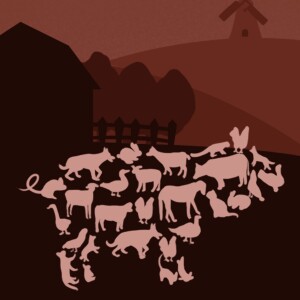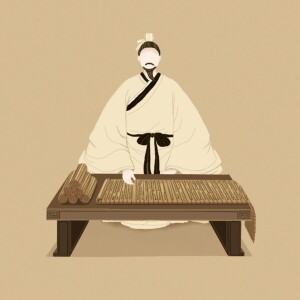Episodes

Tuesday Apr 11, 2023
Tuesday Apr 11, 2023
How To Win Friends And Influence People
How To Win Friends And Influence People Full chapter Introduction
A practical work on interpersonal relations, this book takes an in-depth look at human nature and taps into the hidden weaknesses of humanity. Through reading this book, one can get to know more about themselves and make further self-improvements. This book became a worldwide bestseller immediately after its debut. It has been translated into almost every major language in the world within decades of its release. It’s hailed as the bible of social skills. In 2011, it was number 19 on Time Magazine's list of the 100 most influential books.
Overview | Chapter 1
Hi, welcome to Bookey. Today we’ll unlock the book How to Win Friends and Influence People.
Many of us are familiar with or have even read this book. It has continued to gain popularity and receive acclaim from readers around the world. It has also been published in many editions. Data shows that this book has sold tens of millions of copies worldwide, a truly remarkable number in the history of publication. It provides people with guidelines for dealing with others, in addition to sharing many ideas about how to live a happy life. Numerous people have benefited from it. Ever since Carnegie revealed the secret to harmonious relationships to many people around the world, other books on the subject of interpersonal relationships have emerged. Due to his enormous influence, Carnegie has been praised as one of the greatest experts in self-help and interpersonal relationships.
It may be hard to imagine that, while Carnegie is now a revered mentor in the self-help industry, he used to suffer a lot from his inability to effectively deal with people. Carnegie was not born a genius of social skills. He learned from his own personal experiences and turned them into assets. Carnegie was born in the 1880s in a small town in Missouri. His family was poor, so he was always hungry and cold. Due to malnutrition, little Carnegie was rather skinny and short, making his ears, which were disproportionately big compared to his head, seemed even larger. Because of his big ears, little Carnegie was often teased by his classmates. One day, he got into a fight with a boy in his class. He said something very mean to the boy, who became so furious that he threatened to cut off Carnegie’s ears. Carnegie was terrified. In the next few days, he kept worrying about his ears being cut off. He was even too scared to fall asleep, fearing that his ears would be cut off in his dreams.
But this was not his only concern. When he was a kid, Carnegie would dwell on anxieties to the point of tears. He worried about so many absurd things, for example, being buried alive like a seed, getting killed by a lightning strike, or going to hell after dying. He also worried that no girl would ever want to marry him, or that he would be kidnapped by aliens.
Later on, Carnegie realized that most people’s worries were not necessary, because there was a 99% chance that they wouldn’t happen. After a long period of anxiety and lack of confidence when growing up, he attended the State Teachers’ College in Warrensburgh, Missouri. Here, he took an interest in debating, and became very fond of it. So, he attended debates and public speaking competitions frequently, painstakingly honing his speaking skills. He won the majority of contests in which he participated, and gained great confidence from giving speeches. Gradually, he realized that this could be his life-long career. Afterward, Carnegie started to give inspirational speeches around the world. He wrote many self-help books, like How to Win Friends and Influence People, How to Stop Worrying and Start Living, and How to Enjoy Your Life and Your Job. His courses teaching interpersonal skills started to be held around the world. A worried little boy with low self-esteem finally became the great mentor of self-help we know today.
The book we’re going to unlock today, How to Win Friends and Influence People, is Carnegie’s most influential work. Next, we’ll unlock it in three sections:
Part 1: Techniques for dealing with people
Part 2: Applying the techniques in social interactions
Part 3: From society to family.

Tuesday Apr 11, 2023
Tuesday Apr 11, 2023
Brave New World
Brave New World Full chapter Introduction
"Brave New World", is dystopian classics, which had a profound influence in intellectual fields around the world. In the dystopian society illustrated in this book, human happiness is "socially conditioned". People seem to live happily, without any misfortune or agony. However, as the book goes on, we find they have lost their affection and sentimentality. Even worse, they have lost their creativity and ability to think independently.
Overview | Chapter 1
Hi, welcome to Bookey. Today we will unlock the book ‘Brave New World’.
Let me introduce you to a society where people stay young and beautiful without taking anti-aging health supplements or undergoing cosmetic surgery. Everyone has a job. No matter whether they are an elite leader or a factory worker, everyone is content with their work. People don’t have any family pressure. They don’t have to worry about their children's education costs, or work hard to financially support their elderly parents. Whenever they feel a little unhappy, they only need to take a few tablets of soma, a psychological anesthetic, to get rid of the negative emotions. You must be curious: what exactly is this place? This is the New World, an imaginary futuristic world depicted in Brave New World by British author Aldous Huxley.
Brave New World depicts a scientifically manufactured utopia. The story takes place in the year 632 AF, which stands for After Ford, or 2503 AD in our own calendar. In this New World, the development of society and advancement of technologies used for biological control have reduced humans to the playthings of monopoly gene companies and politicians. Humans are conditioned from fertilization with a predetermined identity, gender, and social role. Children are indoctrinated after birth through something called sleep teaching to feel comfortable staying in their social classes, love their collectives, and welcome promiscuity. At the same time, they are made to hate flowers and books, solitude and family, and religion and art.
Everyone lives and works peacefully, and seems happy with their lives. But are these humans in this new world really happy? A savage named John comes into this civilized world like a small pebble breaking the serene surface of a lake, revealing the flaws of society. This world may have appeared perfect but it lacks freedom. All happiness here is "produced" by applying the results of scientific research performed by rulers and scientists. Human beings have lost their creativity and the ability to love each other and think independently
The author Aldous Huxley is a distinguished British novelist, poet, essayist, critic, dramatist, and a famous humanitarian. He created more than 50 pieces of work in his lifetime. "Brave New World" written in 1932, is one of the most famous dystopian literary classics of the 20th century.
In this Bookey, we will consider three questions:
In Brave New World, how is life restricted and controlled?
Is independent thinking allowed in the Brave New World?
What leads John to destruction?
Next, we will go through the key insights one by one.

Tuesday Apr 11, 2023
Tuesday Apr 11, 2023
Atomic Habits
Atomic Habits Full chapter Introduction
Why do so many of us fail to lose weight? Why can't we go to bed early and wake up early? Is it because of a lack of determination? Not at all. The thing is, we are doing it the wrong way. More specifically, it's because we haven't built an effective behavioral system. James Clear finds that it takes four steps to form a habit. Cue, craving, response, and reward are the pillars of every habit. This book summarizes the four laws that correspond to the four steps to help you quickly build good habits or, counterintuitively, break bad ones.
Overview | Chapter 1
Hi, welcome to Bookey. Today we'll unlock the book Atomic Habits: An Easy & Proven Way to Build Good Habits & Break Bad Ones.
Imagine you're sitting in a plane, flying from Los Angeles to New York City. Due to a mysterious and undetectable turbulence, your aircraft's nose shifts more than 7 feet, 3.5 degrees to the south. After five hours of flying, before you know it, the plane is landing. However, it’s not landing in New York City, but in Washington Dulles International Airport, which is 225 miles from your destination!
A minimal change over time can make a significant difference, and the direction of an airplane is a straightforward example. In the same way, a slight change in your daily habits can steer your path to a completely different destination. That's the incredible power of habits.
Everyone wants to control their lives and not be led by the nose by bad habits. We'll make New Year's plans, vow to lose weight or quit smoking, keep reading or running, but these resolutions will often come to naught. Is it because of a lack of determination? No, we are doing it the wrong way. More specifically, it's because we haven't built an effective behavioral system. James Clear finds that it takes four steps to form a habit. Cue, craving, response, and reward are the pillars of every habit. This book summarizes the four laws that correspond to the four steps to help you quickly build good habits or break bad ones. There isn't just one way to develop good habits, but this book presents an ideal path the author knows. It's suitable for everyone who is seeking a step-by-step approach.
The author of this book is James Clear, a habit researcher and author of the New York Times bestseller. Over 500,000 people subscribe to his email newsletter, and his website receives millions of visitors each month. Clear is the founder of the famous The Habits Academy, which is the leading platform for individuals and organizations that are interested in developing better habits in life and work. More than 10,000 leaders, managers, teachers, and coaches have graduated from The Habits Academy.
Next, we'll go through this bookey with you in three parts:
Part one: The fundamentals of behavior change;
Part two: The four laws of behavior change;
Part three: Inversions of the four laws.

Tuesday Apr 11, 2023
Tuesday Apr 11, 2023
Animal Farm
Animal Farm Full chapter Introduction
The animals of Manor Farm rise up after enduring unremitting oppression under human control. The animals form a plan to drive away the humans and establish a place to live freely and happily. Once liberated, they renamed farm, christening it “Animal Farm.” However, a pig named Napoleon appropriates the spoils of their revolution, and this egalitarian animal society gradually slides towards dictatorship. Under Napoleon’s watch, the animals’ lives are more miserable than ever; they have as little to eat as they did when humans were still in charge. Animal Farm is George Orwell's most famous political satire. The animals act out the conditions of a society under totalitarianism.
Overview | Chapter 1
Hi, welcome to Bookey. Today we will unlock the famous novel, Animal Farm.
George Orwell wrote this political satire in the form of a fable in 1945, giving it the title Animal Farm. The book shocked the world, fueling conflicts between capitalism in the USA and the socialism of the Soviet Union. The story triggered different responses from the two opposing ideologies.
In the capitalist countries of the West, the work was warmly received. People believed it was an objective evaluation of a socialist country and told the truth about its living conditions. Western societies embraced the story, and its popularity grew. Animal Farm was translated into more than a dozen languages, adapted for children, illustrated and turned into animated movies. Orwell himself became a spokesperson and arbiter of his time, with influential moral views and a linguistic style that influenced the works of many western novelists and playwrights of the 1950s and 60s.
However, in Communist Russia, the novel was regarded as anti-Soviet, anti-socialist, and was banned for many years. In fact, the book is widely regarded as a revelation of the dark side of Joseph Stalin's influence in the Soviet Union and an attack on totalitarianism across the world. In the preface to the Ukrainian edition, Orwell says that some elements of the plot were inspired by the historical facts of the Russian Revolution. During the Cold War, the United States actively used the book as a propaganda weapon against the Soviet Union.
So is this really an anti-socialist story? Why did it touch a nerve on both sides? Next, we will discuss the novel’s plot in three parts:
Firstly, we will explain the novel’s narrative framework. We will hear how the animals on the farm plan their revolution and what kinds of power struggle take place as the revolt gets underway. And how the ruler gradually starts to betray the revolutionaries.
In the second section, we will analyze the ideas this work seeks to convey and the symbolic representation behind the character of the various animals.
In part three, we'll talk about Orwell’s approach to writing, how his experiences changed his ideological views, and why he wanted to use animal imagery to illustrate his ideas.

Tuesday Apr 11, 2023
Tuesday Apr 11, 2023
Chapter 1:Rebecca Skloot Books
Rebecca Skloot is a renowned American author and science journalist. She is best known for her book "The Immortal Life of Henrietta Lacks," which became a critically acclaimed and widely popular work. Here are the notable books written by Rebecca Skloot:
"The Immortal Life of Henrietta Lacks" (2010): This bestselling non-fiction book tells the captivating story of Henrietta Lacks, an African-American woman whose cells were taken without her consent in 1951 and became the foundation for many significant medical breakthroughs. Skloot explores the impact of this scientific discovery on Henrietta's family and raises questions about ethics, race, and the medical industry.
"Anatomy of a Pandemic" (2022): This upcoming book by Skloot explores the COVID-19 pandemic, delving into the scientific, cultural, and social aspects of the crisis. It offers insights into the origins of the virus, its global impact, and the collective efforts to combat and understand the disease.
In addition to these notable works, Rebecca Skloot has contributed articles to various publications, including The New York Times Magazine, Oprah Magazine, and Discover, among others. While she may have written other shorter pieces or essays, her major published works revolve around "The Immortal Life of Henrietta Lacks" and her upcoming book "Anatomy of a Pandemic."
Chapter 2:Themes for The Immortal Life Of Henrietta Lacks
"The Immortal Life of Henrietta Lacks" by Rebecca Skloot explores several important themes throughout the book. Here are some key themes:
Medical Ethics: One of the central themes revolves around medical ethics and the exploitation of patients' cells and tissues without their knowledge or consent. The book raises questions about the rights of individuals and the responsibility of the medical community to obtain informed consent and ensure equitable access to the benefits derived from medical research.
Race and Inequality: Skloot addresses the racial disparities and injustices that Henrietta Lacks and her family faced. The book examines how race played a role in the treatment of Henrietta, the lack of acknowledgment and compensation for her contributions to science, and the broader context of systemic racism in healthcare and scientific research.
Family and Legacy: The story delves into the impact of Henrietta's cells on her family, both emotionally and financially. Skloot explores the complex dynamics within the Lacks family, their struggles, and their continued connection to Henrietta's legacy. It highlights the importance of preserving and honoring personal and familial histories.
Scientific Advancement and Responsibility: The book explores the remarkable scientific advancements made possible by Henrietta's cells, known as HeLa cells. It delves into the ethical responsibilities of scientists, institutions, and the medical field to ensure transparency, informed consent, and fair distribution of benefits resulting from scientific research.
Personal Identity and Privacy: Skloot delves into the concept of identity and privacy, particularly in relation to the use of one's genetic information. The story raises thought-provoking questions about who owns our cells and genetic material, and the implications this has on personal privacy, autonomy, and the potential for exploitation.
Overall, "The Immortal Life of Henrietta Lacks" explores profound themes related to medical ethics, race, inequality, family dynamics, scientific responsibility, and personal identity. It sheds light on the complex intersection of science, ethics, and social justice, prompting readers to consider the profound impact of medical research and the importance of ethical practices within the field.
Chapter 3:How many pages in Immortal Life Of Henrietta Lacks
"The Immortal Life of Henrietta Lacks" by Rebecca Skloot is a captivating and thought-provoking book that spans approximately 381 pages. This page count may vary slightly depending on the edition, publisher, and formatting of the book. Within these pages, readers are taken on a journey through the remarkable story of Henrietta Lacks and the ethical and scientific implications surrounding her immortal cells. Skloot's meticulous research and engaging writing style make for a compelling narrative that explores themes of medical ethics, race, family, and scientific advancement. The book's length provides ample space for Skloot to delve into the complexities of Henrietta's life, the impact of her cells on medical research, and the lasting legacy she left behind.

Tuesday Apr 11, 2023
Tuesday Apr 11, 2023
Deep Work
Deep Work Full Chapter Brief
The rapid development of Internet technology and smart products has provided people with a lot of convenience. Meanwhile, all kinds of notifications and messages mean people's working time has become highly fragmented. The author keenly points out that more than 60% of knowledge workers' work time is spent on shallow work. This type of work not only yields limited output value but also permanently reduces people's capacity to work deeply! This book describes how to train the brain to eliminate distractions, improve deep work ability, and create more value.
Overview | Chapter 1
Hi, welcome to Bookey. Today, we will unlock the book Deep Work: Rules for Focused Success in a Distracted World.
If you probe into the experiences of some prominent figures in history, you will find that deep work is pivotal to their success in their respective fields. American author Mark Twain's masterpiece, The Adventures of Tom Sawyer, was mostly done in a shed at the Quarry Farm in New York. His workplace, the shed was so far from the main house where his family lived that they had to call him to dinner by blowing a horn. The theoretical physicist Peter Higgs worked in a nearly secluded environment and refused to use a computer. When Higgs won the Nobel Prize, journalists couldn't even locate him. The novelist J.K. Rowling would stay away from social media while writing Harry Potter. For the first year and a half after opening her Twitter account, she posted only one tweet: "This is the real me, but you won't be hearing from me often I’m afraid, as pen and paper is my priority at the moment."
Unlike these highly influential figures, more and more knowledge workers are straying away from deep work. FranklinCovey, a company specializing in training to improve organizational and personal effectiveness, has tracked more than 350,000 employees worldwide. According to its findings, these employees have wasted 40% of their work time on things that don't matter. In this speed first web-centric era, people have embraced the Internet and remain instantly connected. Knowledge workers dedicate most of their work time to emails, meetings, and social media, yet their essential tasks have been delayed. In this business environment, how can we yield valuable results and stand out in the workplace?
In an age of highly fragmented working time, the approach to deep work proposed in Deep Work makes even more sense. It helps ordinary people become the winners of today's age. In the meantime, we can get gratification from deep work. While arguing for the importance of deep work, Deep Work also provides a systematic way to train our brains to eliminate distractions. Furthermore, the book helps us improve our ability to think deeply and thus create more value.
The author, Cal Newport, received his Ph.D. in computer science from MIT and is currently an associate professor of computer science at Georgetown University. He is also a bestselling author. Besides this book, Newport's bestselling works also include How to Win at College: Surprising Secrets for Success from the Country's Top Students, How to Become a Straight-A Student, How to Be a High School Superstar: A Revolutionary Plan to Get into College by Standing Out, and So Good They Can't Ignore You: Why Skills Trump Passion in the Quest for Work You Love. He is also the founder of the popular blog Study Hacks, which is dedicated to decoding success patterns in work and study.
In this Bookey session, we will look at how ordinary people can be the winners of our time by looking at the following three parts:
Part One: Why do we need deep work?
Part Two: What factors prevent us from working deeply?
Part Three: How to cultivate the ability for deep work?

Friday Apr 07, 2023
Friday Apr 07, 2023
The Power Of Now
The Power Of Now Full Chapter Book Notes
The Power of Now is a classic book by Eckhart Tolle which has been on the Amazon Best Sellers for seventeen years. Since its publication, it has been translated into more than fifty languages and sold more than five million copies worldwide. In the book, Tolle makes an in-depth analysis of the causes of people’s suffering and tells people how to extricate themselves from suffering. This has a strong guiding significance for modern people who are under great pressure at work and are plagued by negative emotions such as anger, anxiety and depression.
Overview | Chapter 1
Hi, welcome to Bookey. Today, we will introduce you to the book Power of Now.
In recent years, people’s pace of life is accelerating, and the pressure of competition is also increasing. This leads to frequent occurrences of depression, anxiety, and other mental disorders. According to the Global Emotions Report conducted by the analytics company Gallup, over the years, the social negative mood index of global respondents has increased year by year, and people around the world are more depressed, angry, and scared than ever. German philosopher, Arthur Schopenhauer, believes that the life of an individual is a constant struggle. Do you agree? What kind of emotional pain have you experienced in your life? How can we face our pain and be free from it? Perhaps, you can find the answer in the Power of Now.
The author of this book is the world-famous spiritual mentor, Eckhart Tolle. In his youth, Tolle also suffered from depression, anxiety and at times was even suicidal. However, just when he was on the brink of complete despair, an unexpected experience miraculously liberated him. Since then, he has been living in a state of serenity and peace.
The experience, at that time, completely changed Tolle’s life. Since then, he has devoted himself to explaining, integrating, deepening this change, and sharing his practical experience to others. At present, he gives lectures all over the world. Through teaching, he conveys this message to people in simple and clear language: we can free ourself from this pain and move deeply into the world of inner peace.
The Power of Now which originated from Tolle’s lectures, seminars and consulting meetings, is a classic. This book helps us realize that we feel pain and live with constant anxiety because we have been under the control of our brain. We are constantly recalling the past and worrying about the future, when in truth the past and the future are just meaningless conceptions of time. Everything is happening in the present and that is all we will truly ever have. Only by focusing on the Now can we be free from pain and achieve inner peace and serenity.
Let’s read this book for you from the following three aspects:
Part One: Why do people feel pain?
Part Two: How does moving deeply into the Now ease pain?
Part Three: How can we move deeply into the Now?

Friday Apr 07, 2023
Friday Apr 07, 2023
Man's Search For Meaning
Man's Search For Meaning Full Chapter Book Notes
The book explores the background and theoretical implication of logotherapy by looking back at the bloody and criminal history of Nazi Germany. While looking into the meaning of rehabilitation among people in extremis, this book bears the most glorious testimony in the history of human nature. Logotherapy is also known as The Third Viennese School of Psychotherapy after Freudian psychoanalysis and Adlerian psychology. This book was named one of the Ten Most Influential Books in America by the Library of Congress.
Overview | Chapter 1
Hi, welcome to Bookey. Today we will unlock the book Man’s Search For Meaning by Viktor E. Frankl.
When it comes to the conversation of finding meaning in life, people often find this topic to be a bit deep and far from our reach; when in fact, it is a topic that is closely associated with our lives.
More often than not, we find ourselves depressed and in pain due to certain negative experiences; experiences such as loosing a job, breaking up with our spouse or loved ones, or being involved in an accident. These experiences have the tendency of making us question our self-worth and plunging us into a deep state of depression and hurt.
When faced with these situations, we often associate the source of these negative emotions to anything that makes us feel unhappy. However, we rarely come to grip with the core problem, which is the fact that we are yet to find meaning in life or at least, have lost grip of it.
You might wonder, what does this book offer to bring us out from these situations? This book offers a way out of depression and negative emotions through the use of logotherapy. This concept, when applied successfully, is certain to reignite your passion for living by helping you find meaning in life.
It is worth noting that the birth place of the concept of logotherapy is Germany’s notorious Auschwitz camp during the Second World War. Many are familiar with the bloody and criminal history of Nazi Germany. Yet, only a few know that those who survived the inhuman torture in those concentration camps weren’t as thrilled and happy to be free. To them, it felt like hitting rock bottom again.
Why you may wonder, who would be unhappy to be free of such inhumane circumstance? The reason for this will be clear to you momentarily. The book Man’s Search For Meaning was named one of the Ten Most Influential Books in America by the Library of Congress.
The author of this book, Viktor E. Frankl, was a Jewish Austrian psychologist. During World War II, Frankl gave up the opportunity to flee to America for the sake of his aging parents. Hence, the whole family was imprisoned in Auschwitz camp. Facing such damning circumstance, Frankl was neither demoralized nor pessimistic. Not only did he strived to survive, he used his personal experience in Auschwitz to create logotherapy, thereby helping many people find meaning and rehabilitation from extremis. He has published 39 works that have been translated into 34 languages and sold around the globe.
To better understand Viktor E Frankl's teaching from this book, we will discuss the key points therein in three vital parts:
In the first Part, we will discuss the Background of the concept of logotherapy;
In the second Part, we will take a look at How to find meaning in life?
And in the third Part, we will highlight the Three-step method to achieving meaning in life.

Friday Apr 07, 2023
Friday Apr 07, 2023
12 Rules For Life
12 Rules For Life Full Chapter Book Notes
Pain is inevitable in life, but there are ways to alleviate it. This book provides twelve rules for us to abide by, each corresponding to a common life problem. When facing life’s conundrums, we should adopt a positive attitude, set goals, engage with issues, solve them, and take responsibility for our lives. When dealing with negative emotions, we should actively find ways to remove obstacles, establish a better outlook, and live a truthful life.
Overview | Chapter 1
Hi, welcome to Bookey. Today, we are going to unlock the book 12 Rules for Life, An Antidote to Chaos.
If someone says, dignified or worthless, people live like lobsters, would you agree? Don’t be so quick to shoot down the idea. Imagine one of your friends serves a lobster at a dinner party and asks everyone’s opinion of the impressive dish. What do you think they would say? Probably something along the lines of “Looks delicious!” or “Wow! Such a big lobster!”, right? Then, what if your friend continued by asking, “Who knows if this lobster is a king or a loser?”, most people would find this question laughable. Do lobsters even have such classifications? Yes, in reality, they actually do.
Lobsters shed their shells as they grow. When they molt, their bodies become soft, and the lobsters know they need to protect themselves from the outside environment, so finding a safe place to stay is vital. Unfortunately, good places are few and far between. Conflict may erupt when two lobsters have their eyes on the same territory.
The Lobsters’ fight for territory can be divided into different stages. At first, they may compare pincer sizes to judge which is the biggest. If an inevitable winner can’t be decided by such a method, the lobsters will begin a desperate whipping competition using their antennae. Only after that point does the real battle commence. Two lobsters, now worked up and angry, wrestle one another. Each aims to flip the other over onto its back. Sometimes the fight is to the death. But the process of the conflict is not our focus here. What is important is that once the battle is over, the defeated lobster, no matter how brave it was previously, completely loses the will to fight. Even if in the future they encounter lobsters they had defeated in past battles, they will flee rather than fight another time. It seems that after a single failure, the defeated lobster’s brain is rewired. The lobster becomes a loser, through and through. Sadly, the same phenomena can happen to humans too. After suffering major blows in their careers or relationships, many people allow themselves to embrace a loser identity.
Indeed, living is not always smooth, and we will encounter unexpected pain and suffering throughout life. However, do we really want to accept the life of a loser? Is that a responsible way to face the world? Are there strategies we can adopt to be easier on ourselves?
To these questions, in 12 Rules for Life, the author Jordan Peterson provides definite answers. Peterson worked as a dishwasher, a chef, a beekeeper, a worker on an oil field and various other manual-laboring occupations in order to survive. Through his own efforts, he aspired to become a teacher and is now a popular professor, highly respected by his students, and indeed, one of the most important thinkers on the world stage. He has been described by those he has taught as one of their top three life-changing lecturers.
In this book, Peterson condenses his research and life experience into twelve rules to help us solve significant life problems, including how to live positively, how to deal with pain, how to establish correct values, how to support children properly, and more. Follow these rules well, and your life will be enlightened.
Next, we will break down the main contents of the book into two sections:
Part One, Facing life head-on with a positive attitude
Part Two, Dealing with pain by being mindful

Friday Apr 07, 2023
Friday Apr 07, 2023
The Art Of War
The Art Of War Full Chapter Book Notes
Sun Tzu’s The Art of War, also known as Sun Wu’s Art of War, is the earliest military book known in China and the world’s first military treatise. It is known as the scripture of military science and the first book of war. The Art of War played an essential guiding role in ancient China’s system of military education and the practice of war. It is not only a luminous treasure in China’s military heritage, but also remains, to this day, the cornerstone of military wisdom handed down from ancient times.
Overview | Chapter 1
Hi, welcome to Bookey. Today we will unlock The Art of War for you.
If we consider war to be a feast of death, then military strategies and tactics are the philosophy of fighting for survival. They are experience and wisdom gained through bloodshed. Such plans and precision maneuvers not only concern the survival of a country, as success or failure on the battlefield determines a nation’s future, but war also seals the fate of every individual. Whenever a war breaks out, lives are at stake, and that’s why military tactics are of utmost importance.
To understand the maneuvers on the battlefield, The Art of War is indispensable. It is the oldest book on military strategy, initiating this field of study. It provides essential guidance both to ancient Chinese military studies and modern warfare. Based on predecessors now lost, the book summarizes archaic principles and axioms relating to combat and further develops these into a system of military theory. Any reader opening the book will encounter a comprehensive description of the military methodology, from necessary preparation prior to the battle and the application of strategy in the field to the deployment, ordinance, and the study of your enemy. With the philosophy of dialectical materialism, The Art of War is regarded as the essence of early Chinese military thought. This book is a piece of esteemed Chinese cultural heritage, a jewel in the crown and often hailed as the “sacred book of military science” and the “best book on military from ancient times”.
However, although this book’s subject is war, it does not advocate conflict. Instead, Sun Tzu encourages leaders always to try peaceful means first and use force as a last resort, going into a war only when the other party was uncooperative. Sun Tzu believes that supreme excellence is not to win every battle, as the most effective action is breaking the enemy’s resistance without needing to put up a fight. Moreover, he pointed out that some generals’ excellent skill in waging war is not because they are born to be aggressive warriors but because they understand how to secure favorable circumstances before the battle starts. On the other side, those destined to lose will be the first to plunge in with a display of their might and look for opportunities as an afterthought. For Sun Tzu, it is never wise to meet your enemy head-to-head in battle. Only by attacking an army’s weaknesses and avoiding clashing against their advantages can a great commander use his troop maneuvers to work a triumphant miracle.
These insights go some way to explain the enduring popularity of The Art of War. The book ranges far beyond military schemes and tricks, considering strategy at its highest level, where it becomes a wise philosophy for life. So, to this day, the book continues to have great relevance.
The Art of War is divided into 13 sections. For your ease, we have combined the parts into the following four chapters. These cover the main ideas in the book:
Part One: Military Strategies
Part Two: Military Tactics
Part Three: Armed Struggle
And Part Four: Environment








